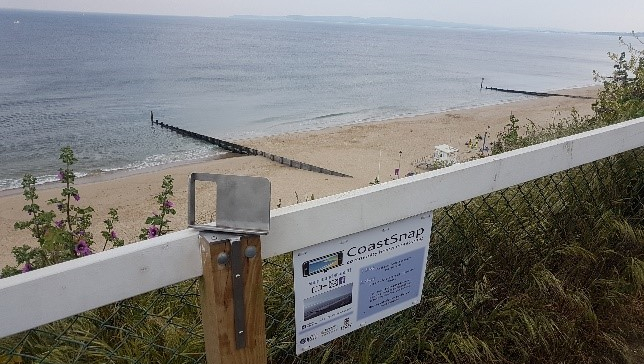A dynamic revetment is a ridge of cobbles constructed around the wave runup limit which is designed to mimic composite beaches which consist of a lower foreshore of sand and a backshore ridge constructed of gravel or cobbles which stabilises the upper beach and provides overtopping protection to the hinterland. The overall aim of this project construct a prototype-scale beach and investigate the response of the beach to a rising sea level and storms with and without a dynamic revetment structure through 3 main work packages:
WP1 Determine the performance of dynamic revetments to a rising sea-level and their resilience in response to a range of high and low-energy wave conditions. Analyse the response of the sandy foreshore to SLR with and without the presence of a revetment.
WP2 Gain fundamental information about wave transformation in the surf and swash zones, beachface morphology change and the dynamics of nearshore bars due to changing waves and water levels. This fundamental knowledge will enable an understanding of the revetment performance and beach response to SLR, potentially indicating approaches to improve revetment design and beach resilience.
WP3 Test and improve the capabilities of parametric and process-based models in predicting wave transformation and morphology changes of the sandy beach alone and in presence of the dynamic revetment using the laboratory results. Generalize the results to prototype conditions to optimise the dynamic coastal protection design in the presence of SLR.
The project is led by Bath with colleagues from national, European and international partner institutions and has now been extended thanks to GCRF funding to undertake a follow-up experiment at the GWK flume which will investigate the performance of a very low-cost revetment structure designed for developing countries constructed using dumping of low-grade irregular stones from quarry run-off.
Science
A novel, near-prototype-scale experiment was completed in the GWK large wave flume in Hannover in Summer 2017 and a further experiment will be undertaken in November 2019. Comprehensive measurements of hydrodynamics and sediment transport were collected using a large suite of instruments installed by the project partners. The measurements are being used to not only investigate the stability and performance of a cobble revetment in energetic seas with a rising water level, but also undertake detailed studies of nearshore coastal processes including bar formation, energy dissipation in the surf zone, repeatability of wave-by-wave sediment transport and validation of multiple computational models.
The work has so far led to the publication of 1 journal paper and 3 conference papers, with 3 journal papers currently ready for submission.
Impact
Coastal regions are becoming ever more at risk from damaging storms due to increasing storm magnitudes and rising water levels caused by our changing climate. In many areas, new coastal protection will be required to maintain the current coastal land area and in areas that are already defended, existing defences will become obsolete.
The high cost and aesthetic impact of many traditional coastal defence approaches makes them unaffordable or unattractive for many regions were development is minimal and the highest standards of flood protection are not required, e.g. existing undeveloped beaches where retreat is undesirable. In such locations “soft engineering” solutions which provide protection but minimise impact on natural processes and landscape are desirable.
This project is investigating a novel “soft engineering” approach known as a dynamic revetment which mimics a class of natural beaches (composite beaches). The stability and overtopping performance of this approach will be examined as well as the detailed behaviour in an energetic wave climate and rising sea. The knowledge gained will establish the potential of these structures to be used in future coastal defences schemes in both the developed and developing world and make progress in the development of design guidance.



